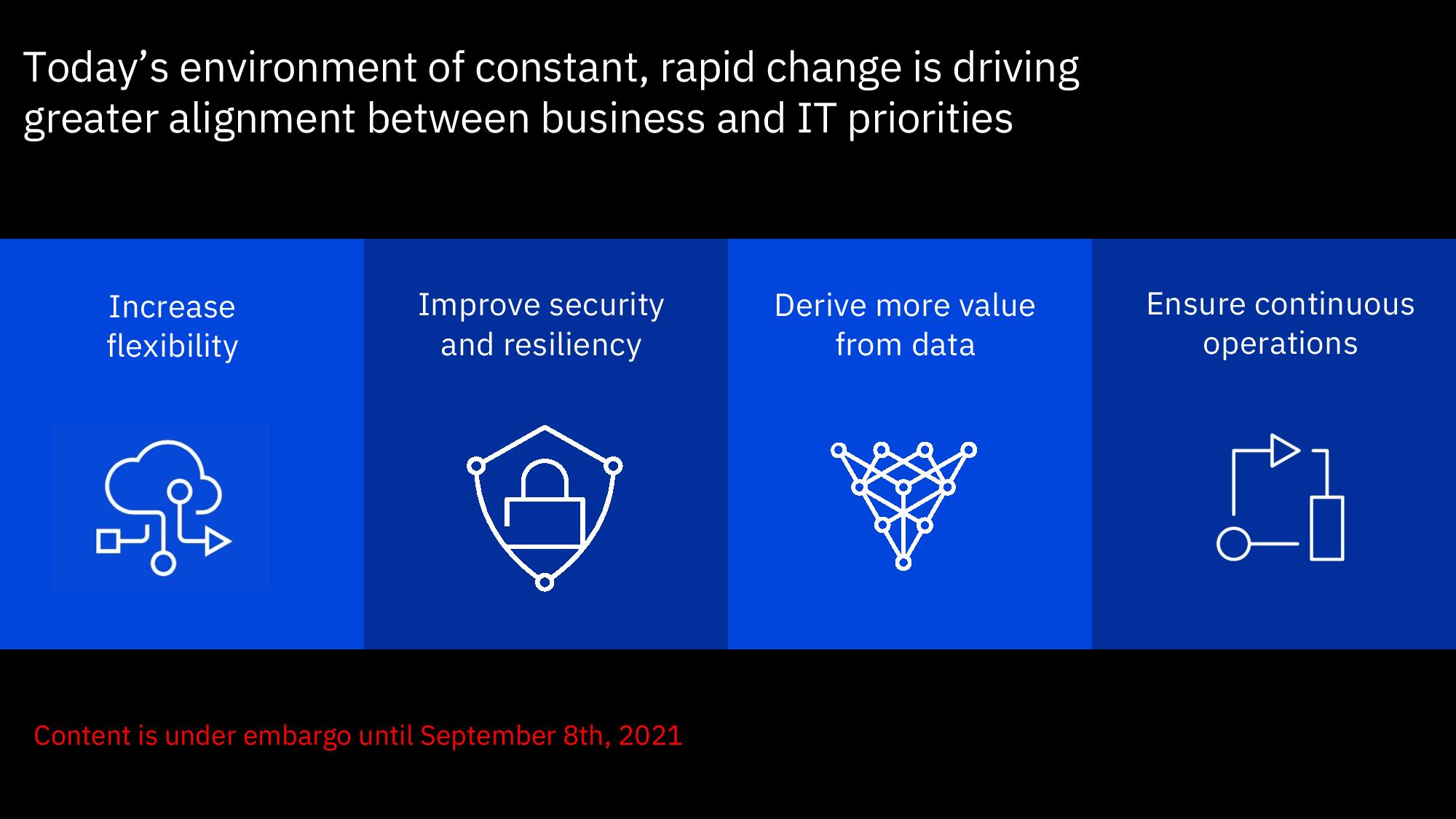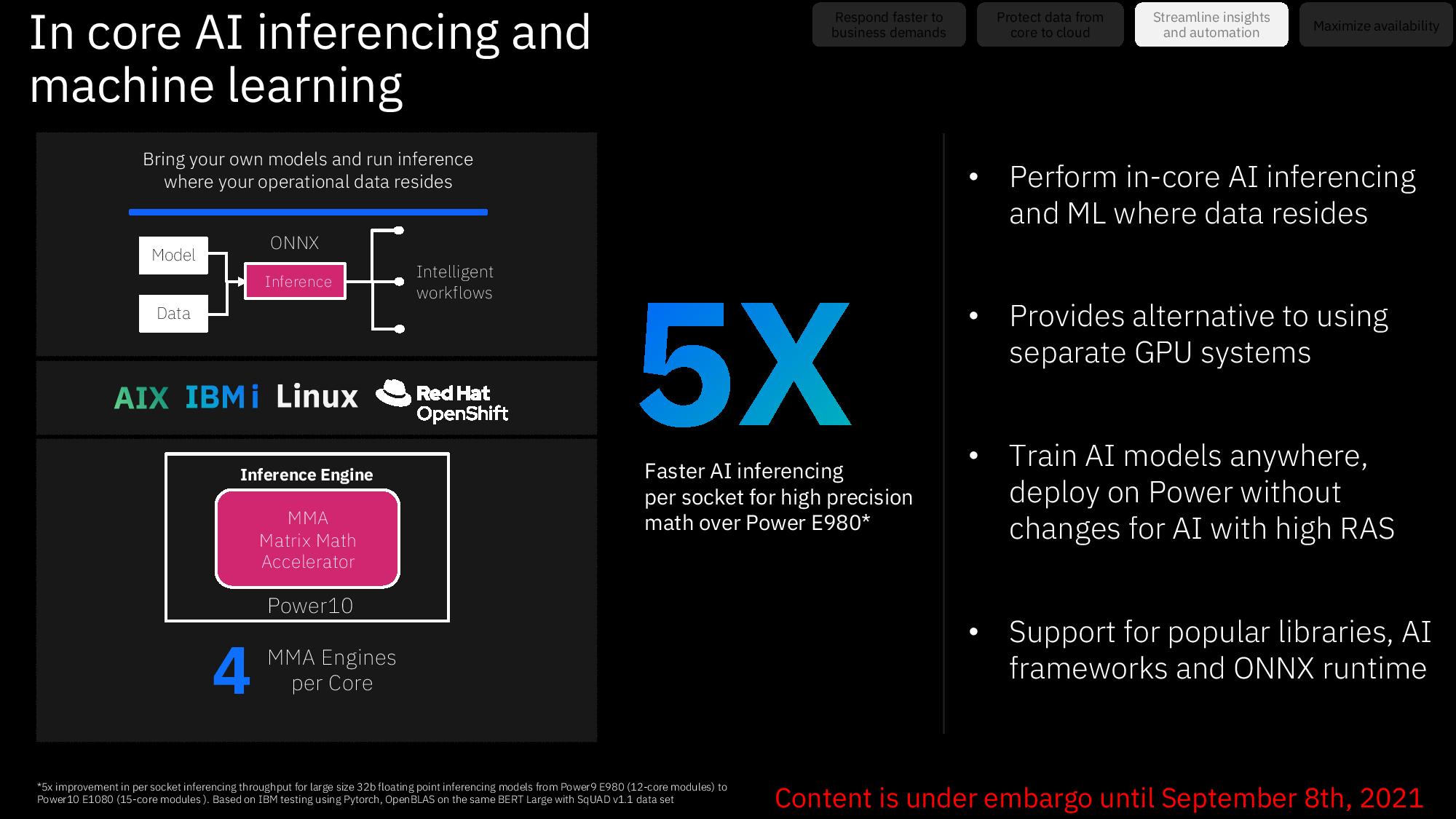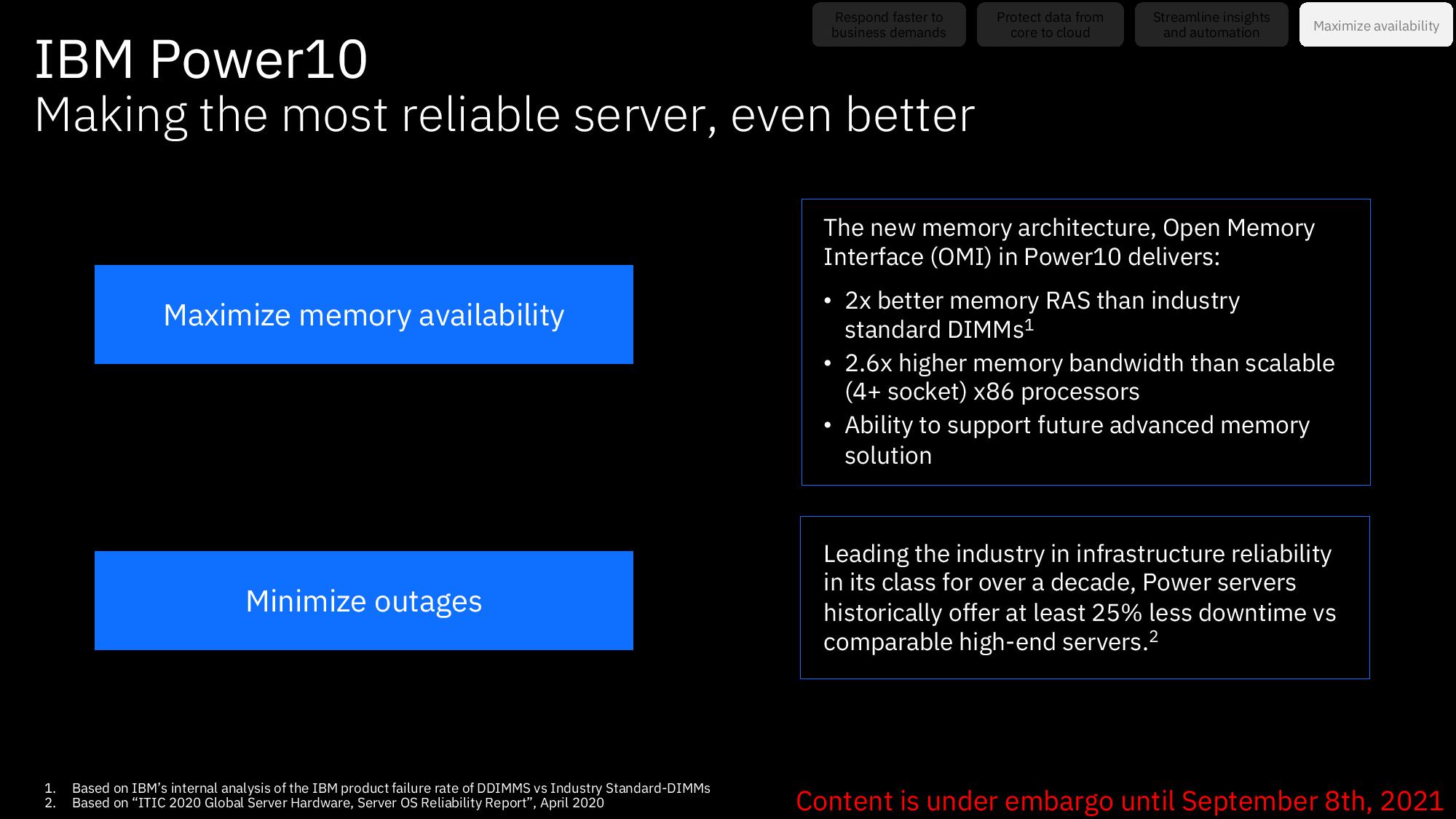IBM Unveils Next-Generation Power10 Servers for Hybrid Cloud
IBM's Power Instruction Set Architecture (ISA) has been one of the common non-x86 solutions for servers. With advancements made to the Power ISA, it is only a matter of time before the processor and server platform get updated. Today, the company updated its server offerings with the latest chips.
To put things into perspective, IBM's Power processors are not exactly very common. Unlike x86 and Arm solutions, IBM Power CPUs are used for heavy-duty computations like nuclear simulation and mission-critical workloads. For instance, IBM's previous generation Power9 CPUs are at the heart of ORNL's Summit supercomputer with 200 PetaFLOPs of computational performance.
The Power10 family of processors has three SKUs, and each model can carry either 10, 12, or 15 cores per CPU. The CPU itself features an 8-way SMT technology, allowing each CPU to have 80, 96, or 120 virtual cores/threads, all inside one socket. In addition to the incredible SMT features, each core carries its own 2MB of L2 cache, and there's up to 120 MB of L3 per CPU (8MB per core). As a result, the processor achieves up to 409 GB/s of memory bandwidth per core, and all of the L2 and L3 caches are equipped with ECC technology.
IBM E1080 servers are infused with Power10 processors. The E1080 server hosts either a 4-socket or a 16-socket solution that carries Power 10 processors. The Power10 CPUs are scalable up to 15 cores with 8-way SMT, so the maximum configuration tops out at 240 cores with 1920 virtual threads. In the base quad-socket variant, that maximum is 60 cores and 480 threads.
IBM supports 64GB DIMMs on the 4-socket systems, and you can use 128GB DIMMs on 16-socket systems. The 4-socket SKUs can carry up to 16TB of buffered DDR4 CDIMMs, while the 16-socket solution can carry up to 64TB of buffered DDR4 CDIMMs. Integrated PCIe adapter slots are set at eight PCIe 5.0 slots in quad-socket SKUs, while the 16-socket SKU is allowed to offer 32 PCIe 5.0 slots.
As far as performance is concerned, we have provided the official IBM slides that benchmark various things like AES encryption, showing off the new crypto engine and matrix acceleration built-in the processor. As with all vendor-provided benchmarks, take them with a grain of salt.


















Overall, the IBM E1080 lineup of servers competes directly against Intel's highest performance Xeon Scalable Platinum-based systems, where IBM claims that in some workloads, the Power10 systems can outperform Xeon systems by a very wide margin. Per-core performance for Power10 is seemingly very high, and IBM has optimized the CPU to be the best contender for specific hybrid cloud workloads.
Get Tom's Hardware's best news and in-depth reviews, straight to your inbox.